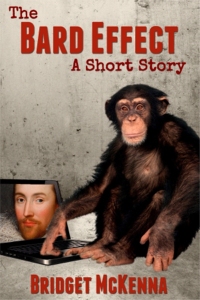 Not all your writing is created equal.
Not all your writing is created equal. Superfluous Redundancy
A lot of editorial red ink goes into the task of showing new writers what they’re saying that they don’t need to say. I call this problem “superfluous redundancy.” Don't bother to write me; it's a joke. But the problem is not. When a writer is hesitant and unsure how to proceed, he will almost always err on the side of too much explanation, too much justification, too many words. And those words get in the way of the story.
This might be a good place to bring up what a beloved writing teacher, Algis Budrys, told me one day almost 30 years ago:
“The manuscript is not the story.”
It took me a minute to get that the first time I heard it, so I’m gonna say it again: The manuscript is not the story. The manuscript is where we put down the words we’re using to tell the story; it is not the story itself. Often, Algis told me, we say “I’m working on my story” when what we mean is “I’m making changes to my manuscript.” Sometimes the manuscript gets in the way of the story, and if you know the difference between the two it’s easier to remove words that aren’t pulling their weight to allow your story to emerge from your manuscript. Making that distinction allows writers to understand what a good editor does for them, and why making suggestions for revisions to the manuscript does not necessarily threaten the story.
 The editor gets out the metaphorical scissors.
The editor gets out the metaphorical scissors. There are a lot of reasons an editor might suggest text cuts, but you’d be surprised how much of the reasoning boils down to cutting repetition, and repetition usually takes one or more of the following forms:
The information in the cut portion has been stated before or after the cut, and the deleted words are the weakest or otherwise unnecessary version of the two. Cut portions will appear in red.
A spray of bullets erupted from the wall of smoke. They spat out from the middle of the cloud.
The information is strongly implied by something you’ve written before or after the cut, and it’s not necessary to state it outright.
Curtains moved aside in one of the top-floor windows. Someone was watching.
The information is obvious from context.
“Do it now!” he commanded.
The information is obvious because of point of view.
Kelly watched as tThe dog turned and trotted away.
There’s a shorter, clearer, and/or more impactful way of saying it.
(Insert any long-winded, filler-heavy sentence from your own early draft here.)
 Relax...it's probably only ink.
Relax...it's probably only ink. Below are excerpts from editing comments I’ve made to authors I’ve worked with in the past. In every case, I’ve changed the wording to avoid identification, while leaving the problems intact. My comments appear in green.
She did not respond.
The reader is watching this happen, so if she doesn’t speak, we don’t have to be told she didn’t.
“I’ll be back in an hour.” With that, he left.
Ten points from Hufflepuff for the fish head (See Part 4: The Weakeners) “With that.” Another ten for telling us he left instead of showing him leaving, or just letting his words speak for him and transitioning to what happens next.
Martin brushed past without acknowledging the man or his outstretched hand.
If Martin walked on and nowhere in the narrative did he acknowledge the man, that fact is evident to the reader. The reader doesn’t need to be told that he didn’t.
He had no idea where he was, or even who he was. He had no memory of his past.
You said it, then you said it again. The second telling weakens the first one. “…who he was” is the strongest place you can exit this sentence. If you like, you can then show him going for a memory and coming up dry rather than telling the reader he can’t remember.
Then she asked a question: “Why would you do that to me?”
Since you show her asking the question, you don’t need to tell the reader that she asked it.
“The car stopped and turned around in the road, spinning its tires. He suddenly realized that i It was coming back this way.”
He realized it because he saw what happened. So did the reader.
His attention was drawn to the wolf. The wolf lowered its head and snarled.
We saw the wolf as soon as the POV character did. We don’t need to be reminded that it’s there. The second sentence shows the wolf in action. That's what you want.
He almost asked her if she’d lied to him, but then he decided she’d only clam up.
We’re reading his thoughts; we don’t need to be told that he decided it.
Jase looked at both of them.
If there are two other people in the room, and Jase looked at them, he looked at them both.
He sank back against the wall, then slid down to sit against it, head down, breathing shallowly. He did not struggle.
Not only is that evident from the description of his actions that the character wasn’t struggling, but you're telling the reader what didn’t happen.
Never waste your reader’s time describing what doesn’t happen.
 As you know, Clive, we're Beefeaters.
As you know, Clive, we're Beefeaters. There are few rules in writing that are absolute. Here’s one that just might be: never, ever say “as you know.” Never say anything that even smacks of it, like “as I told you already,” “as you heard from Joe,” or “as we’ve already covered in a previous discussion.” This is a type of info dump also called an “As you know, Bob…” (AYKB)—a weak method of using dialogue to cover ground that you suspect should have already been covered offstage, or in a previous scene you decided not to write.
Characters do have conversations while readers aren’t listening, so they sometimes refer to things in the context of previous knowledge, just as flesh-and-blood people do. But the difference is that the fictional ones never say “as you know.”
There are ways to show information was received previously:
- “I warned you that might happen…”
- His mother had warned him about Sasha more than once, but as usual he hadn’t listened.
- “You always used to tell me he couldn’t be trusted.”

Your reader probably has a pretty good idea which body parts are involved in which sensory experiences, so you don’t need to say:
She tasted ___ in her mouth.
That’s where she’d taste anything.
The same goes for all activity and body part pairs:
He punched the guy with his fist.
I kicked the tire with my foot.
By the same token:
He remembered hearing about Lorna in the past.
If a character remembers something, the reader already knows it’s in the past. Even more direct:
He’d heard about Lorna.
Hesitant, unsure writing leads to the desire to spell out things that your reader can understand from context. It puffs up your manuscript with useless words that don’t serve the purposes of your story. Learning your own hesitant writing habits will help you to correct early-draft repetition and avoid the curse of superfluous redundancy.
TL;DR
Overexplaining causes repetition that bloats your sentences and blunts your writing.
Eliminate repetitive information to give your reader a clear and direct experience of your story.
Never use any form of “As you know,” “As I already explained,” “As you heard from that other character,” not even if threatened with lethal weapons.
Have you avoided saying what was evident, obvious, or actually stated elsewhere in a different way?
COVER ART
All the fabulous pulp magazine covers on this article series were created using the amazing Pulp-O-Mizer from art by its creator, Bradley W. Schenck.

Part 2: Vampire Verbs, Zombie Verbs, and Verbs that Kick Ass
Part 3: Attack of the Adverbs!
Part 4: The Weakeners
Part 6: Secrets of Relative Velocity
Part 7: Two Languages
Part 8: Dialogue Tags
Part 9: Dangling Modifiers
Part 10: Passive Voice
Part 11: Homophones
Part 12: Point of View Violations

Thanks for linking to this blog post!
A Novel Experience - Best of the Week's Articles
Did I miss anyone? Let me know!













 RSS Feed
RSS Feed




